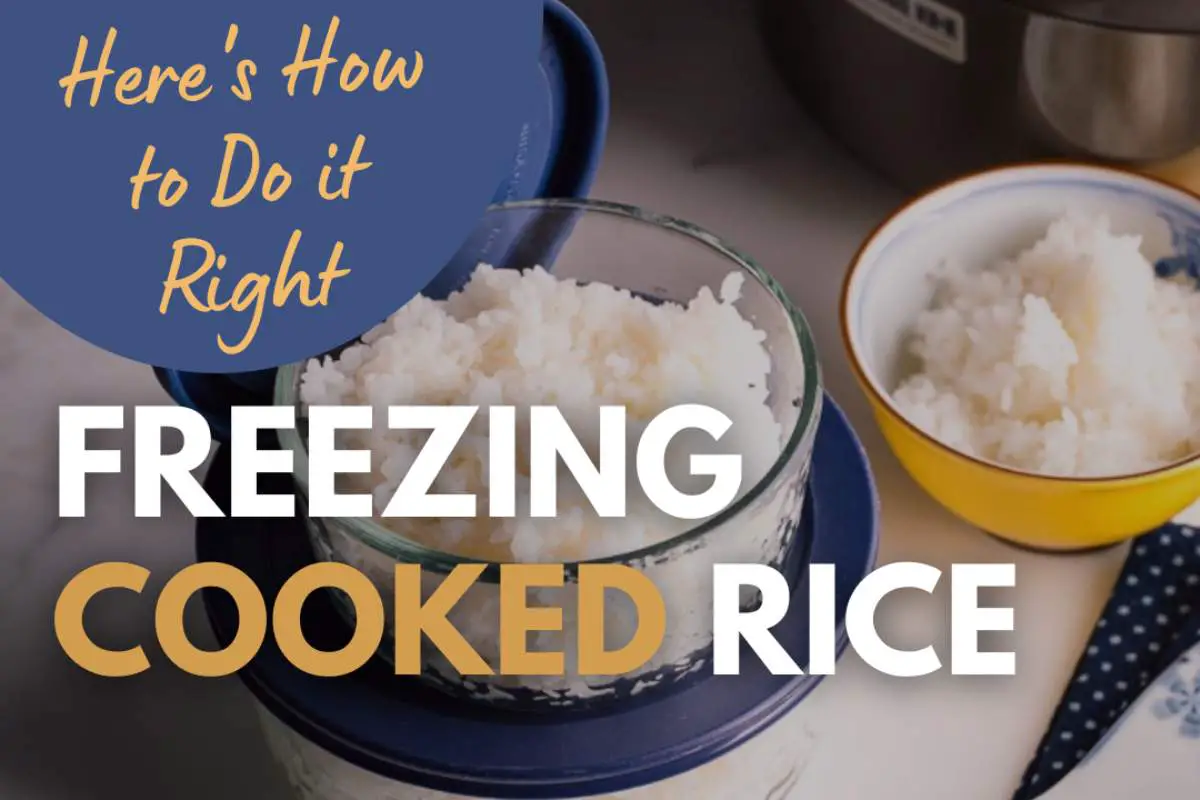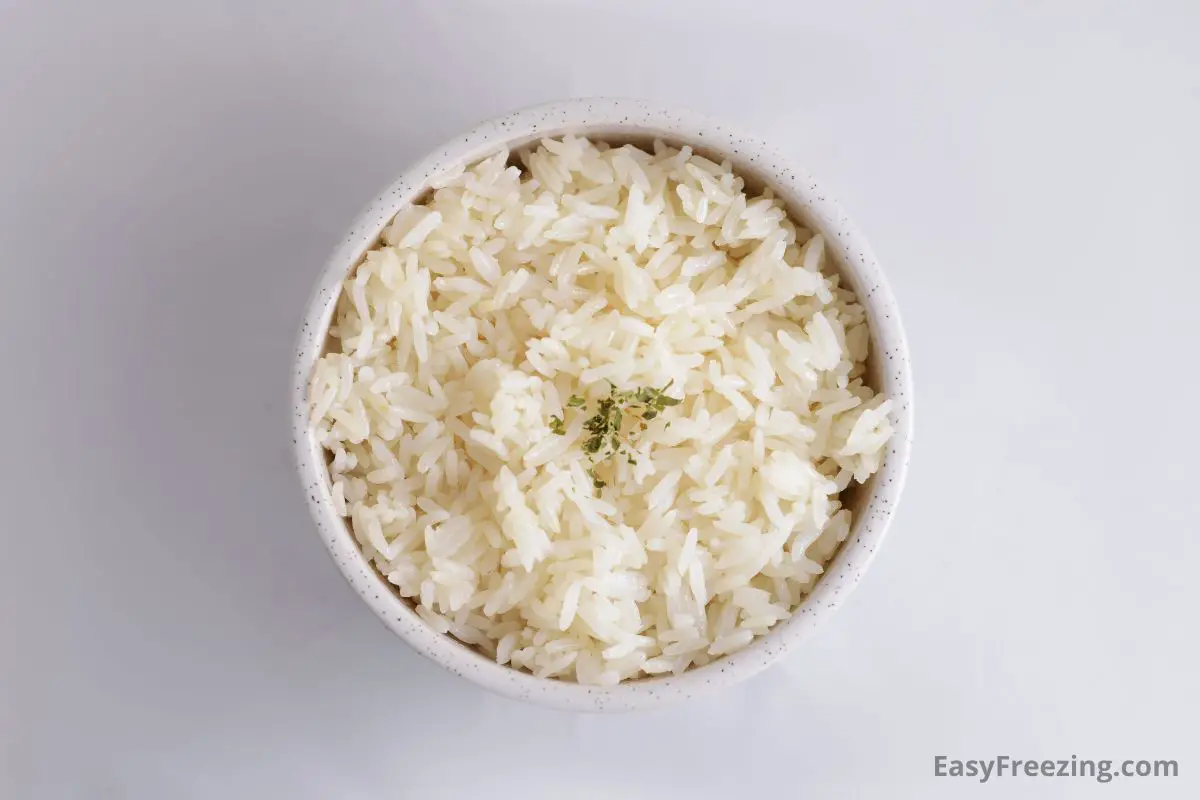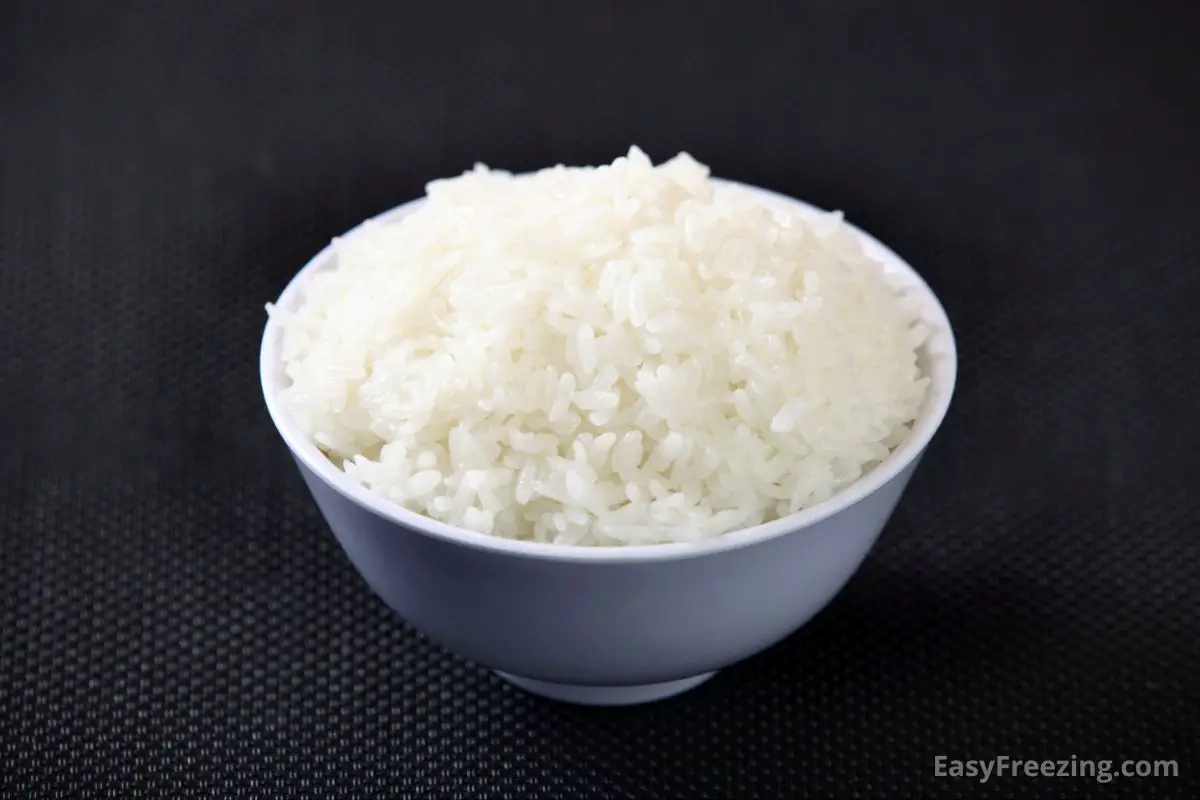Freezing Cooked Rice (How to Do It Safely)
Have you ever considered cooking rice in a large batch, with the idea of freezing it to use with other meals later?
You may have heard that leftover or undercooked rice can contain Bacillus cereus, which can cause illness. Unfortunately, bacillus cereus is a bacteria that can survive the freezing process, which might leave you wondering,” Can you freeze cooked rice safely?”
The answer is yes, you can freeze cooked rice safely as long as you follow some basic rules with regards to its storage, cooking, handling, and reheating.
You can freeze any type of cooked rice, including white rice, brown rice, basmati rice, sushi rice, and long rice. You can even freeze fried rice with vegetables to use as a side dish for a later meal.
Continue reading to find out more about safely freezing cooked rice.

Can Freezing Rice Make You Ill?
There are several ways that rice can cause illness, even before you get to the point of storing cooked rice in the freezer.
Bacillus Cereus is a bacteria found in rice that is supposed to be destroyed by cooking. However, if the rice is not heated to a high enough temperature or is left sitting out after cooking for over two hours, this bacteria can begin to grow. Bacillus Cereus will even survive the freezing process!
Moisture combined with starch encourages bacillus cereus to grow, and cooked rice has both. The bacteria also thrives in warmer temperatures, around the 85 degrees F to 95 degrees F you would find in a rice cooker.
This is why it is important to handle your rice carefully throughout the cooking, serving, cooling, and reheating processes.
Cooking Rice For Freezing
All of that being said, you can safely cook rice and store it in the freezer.

Your first step to cooking bacteria-free rice is to wash your hands or even wear plastic gloves before handling it.
You always want to follow the cooking instructions on the rice package exactly. Your rice must be brought to a boil to destroy any pathogens.
Don’t Rinse Rice Before Cooking
There is no need to rinse rice or soak it overnight, as wetting it with cold water causes its structure to break down, giving it a stickier, mushy texture.
According to the Food and Drug Administration (FDA), rinsing or soaking rice may also reduce nutrients such as iron, folate, niacin, and thiamin, by 50 percent or more.
Don’t Leave Leftover Rice Sitting Out
You might be thinking that your leftover rice can sit out for a while longer on the counter, but it really is crucial to get it into the freezer as fast as possible.
After your rice is safely cooked, you should keep it hot at 140 degrees F or above.
If your rice has been sitting out at room temperature for more than two hours, then you need to toss it, not freeze it. If it has been sitting at a temperature of 90 to 100 degrees F for more than an hour, then toss it just to be on the safe side.
Cool Your Rice Before Freezing
Whether you are planning to refrigerate or freeze rice leftovers, you need to store cooked rice at 40 degrees F or below as fast as possible.
To cool rice more quickly, divy a large batch up into smaller portions by placing them in shallow airtight containers or zippered freezer bags. A good size for a freezer bag is two cup portions, as smaller portions freeze quicker than large ones.
Once the rice has been divided up, place the bag or container in a bowl of cold water to cool the rice off as quickly as possible (don’t let the water come into contact with the rice).
Keeping Cooked Rice in The Fridge
If you are thinking of refrigerating your rice, try to use it within a day. The refrigerator is much warmer than the freezer and is a moist environment conducive to the growth of bacteria.
You are risking your health if you are planning on eating cooked rice stored in your fridge for three to four days.
You are much better off storing it in a resealable bag or airtight container in your freezer, where the rice will keep for up to a month.
Freezing Cooked Rice Step-by-Step
Here are two different ways to freeze cooked rice while keeping the rules of food safety in mind.
Freezing Rice Method #1
- Keep the rice at 140° F or above after cooking until you are ready to freeze it.
- Split the cooked rice into smaller portions and put them into freezer-safe bags or airtight containers.
- Since at this stage the rice is too warm to place in the freezer, you will need to float the open bags or containers in cold water (water with ice works great) to quickly cool off the rice. At the cooling stage, the bag or containers need to remain open so that any excess water vapor is released.
- Once the rice has been cooled to room temperature or below, press out the excess air (if using a ziplock freezer bag) and seal the bag or container.
- Immediately place the containers of rice into the freezer.
Freezing Rice Method #2 (Flash Freezing)
Flash freezing is my favorite method for freezing rice. It gets the cooked rice grains frozen quickly without them spending much time in a moderate temperature range where bacteria can take hold.
- Place your fresh cooked rice on a metal baking sheet in a flat layer. You can use a spatula or wooden spoon to flatten the rice right across the surface of the pan.
- Place the metal pan so that it is level in the coldest part of your freezer space. Leave it there for one to two hours until the rice grains are frozen solid.
- Remove the metal baking pan from the freezer and transfer the frozen rice to freezer bags. Be sure to compress the bag with your fingers to remove all of the air.
- Place the bag of rice into the freezer.
Either freezing method will allow you to keep cooked rice frozen in the freezer for up to one month.
Tip: By placing the cooked rice into multiple smaller bags or containers, you can just pull what you need for a meal from the freezer without affecting the remaining frozen rice.
Also: To avoid eating frozen rice that is too old, be sure to label it with the name and date by which it should be used.
Find out about freezing uncooked rice in our article here.
Reheating Frozen Rice

To avoid food poisoning, it is also a good idea to be attentive as to how you thaw frozen rice.
- It is okay to leave frozen rice thawing in the refrigerator overnight, although it may tend to get mushy.
- You can also reheat frozen rice immediately after pulling it from the freezer. There is no need to thaw it first. Try cooking it in a saucepan with broth or water. This should be done as soon as possible after the rice has been removed from the freezer to be on the safe side.
- The fastest way to thaw frozen cooked rice is to sprinkle it with water and pop it into the microwave for a few minutes.
Each of the three ways listed above provides a safe way to thaw your frozen rice. It’s really just a matter of what you want to do with the rice and how soon you’ll need it.
Refreezing Previously Frozen Rice
It is possible to refreeze previously frozen cooked rice as long as it was reheated to at least 165 degrees Fahrenheit. Heat at this level will destroy any bacteria that may be present.
However, while it is possible to re-freeze previously frozen cooked rice, I would not recommend it. Freezing, thawing, and re-freezing most food items degrade the texture and taste, and this certainly includes rice.
Freezing Cooked Rice – Conclusion
Freezing cooked rice is possible and safe as long as the rice was both handled and stored properly. Cooked rice can be kept frozen for up to one month, allowing you to have several meals from one batch of rice.
Making meals with frozen cooked rice is very easy. You can simply thaw rice in the microwave and serve it in a variety of dishes, including chicken fried rice, stuffed peppers, and vegetarian rice and beans.



